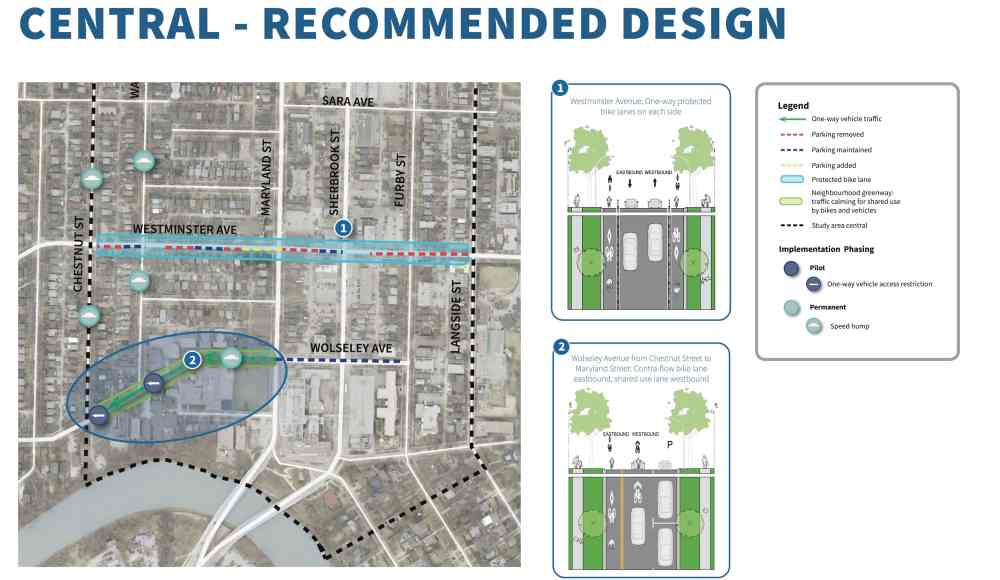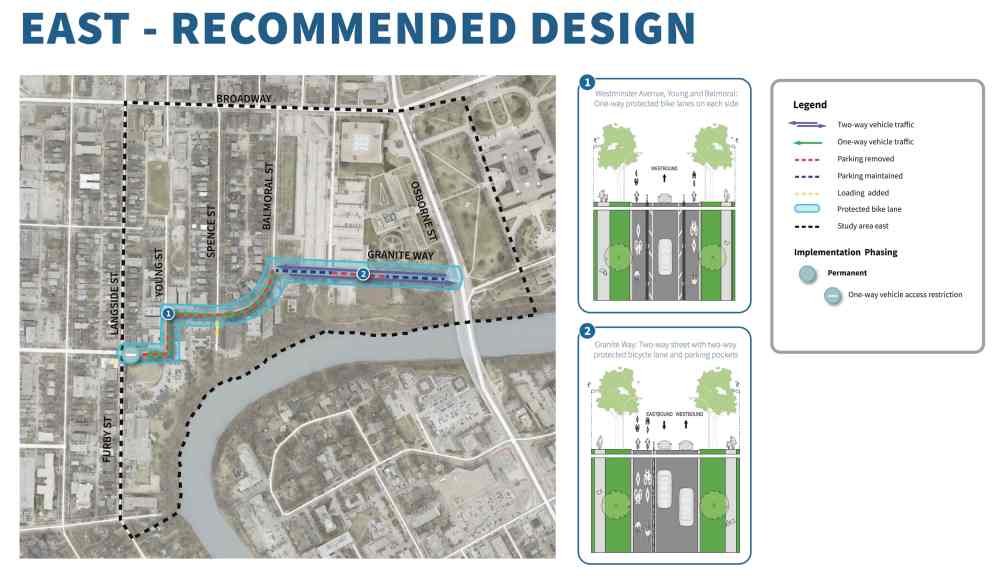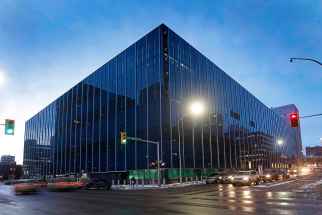City unveils Wolseley-to-downtown bike project
Read this article for free:
or
Already have an account? Log in here »
To continue reading, please subscribe:
Monthly Digital Subscription
$0 for the first 4 weeks*
- Enjoy unlimited reading on winnipegfreepress.com
- Read the E-Edition, our digital replica newspaper
- Access News Break, our award-winning app
- Play interactive puzzles
*No charge for 4 weeks then price increases to the regular rate of $19.00 plus GST every four weeks. Offer available to new and qualified returning subscribers only. Cancel any time.
Monthly Digital Subscription
$4.75/week*
- Enjoy unlimited reading on winnipegfreepress.com
- Read the E-Edition, our digital replica newspaper
- Access News Break, our award-winning app
- Play interactive puzzles
*Billed as $19 plus GST every four weeks. Cancel any time.
To continue reading, please subscribe:
Add Free Press access to your Brandon Sun subscription for only an additional
$1 for the first 4 weeks*
*Your next subscription payment will increase by $1.00 and you will be charged $16.99 plus GST for four weeks. After four weeks, your payment will increase to $23.99 plus GST every four weeks.
Read unlimited articles for free today:
or
Already have an account? Log in here »
Hey there, time traveller!
This article was published 07/01/2020 (2168 days ago), so information in it may no longer be current.
Downtown residents can expect more one-way streets, protected bike lanes and traffic-calming measures if the city’s proposal for active transportation in and around Wolseley and the core gets the green light.
Following more than a year of public consultations, the City of Winnipeg has made public its plans for the “Wolseley to Downtown Walk Bike Project.”
The blueprint aims to close gaps in the area’s pedestrian and cycling network, while increasing safety and convenience for all commuters.
It suggests making sections of major arteries, including Westminster and Wolseley avenues, one-way to prevent short-cutting that backs-up traffic on surrounding residential streets. Also on the table are more right-on-red light restrictions, speed humps, and raised bike lanes and crosswalks.
“Everybody has a right to get where they want to get to and you hope you can go as quickly as you can, regardless of your mode of transportation,” said Greg MacPherson, executive director of the West Broadway Community Organization.
“I think they’ve done a good job of trying to balance convenience and safety, and the overall hope for a greener approach to transportation in this area.”
MacPherson said the community has been pushing for changes to the flow of traffic in the area for years, since a large chunk of residents don’t own vehicles. He typically commutes on foot, although he also bikes and owns a car.
While 70 per cent of total the city’s total population drives to work, the latest census data indicates only 37 per cent of residents in West Broadway rely on cars as a go-to mode of transportation. About 32 per cent take the bus, 20 per cent walk, and nine per cent bike to work.
Wolseley resident Nicholas Douville, 38, bikes to work every day — rain or shine, summer breeze or windchill. He submitted some of the 11,000 comments the city received during Phases 1 and 2 of the project.
Douville said the main concern he has is Maryland Street gets so backed-up during rush hour motorists try to sneak through residential roads and create traffic jams, which can put cyclists in danger due to increased traffic in areas with no bike lanes, let alone protected ones.
To avoid short-cutting, the city has proposed a westbound one-way traffic stretch between Maryland and Chestnut streets. As for other one-way sections, the city has proposed restrictions for eastbound traffic along Westminster Avenue, as well as Young and Balmoral streets west of Langside Street.
“If there was a bike lane that could be cleared (on Westminster) and kept up, that would be the greatest thing, because I wouldn’t have to worry about driving straight along with cars,” said Santiago Lasko, a 16-year-old student who commutes to and from high school in the West End.
“Sometimes my handlebars get really uncomfortably close to cars mirrors and it gets kind of dangerous. There are some angry people.”
A protected bike lane could stretch along Westminster Avenue, starting at Chestnut Street in the west, to Young and Balmoral streets and Granite Way until Osborne Street in the east, as per the plan.
A Wolseleyite, Lasko said he rides the 4.5-kilometre stretch to school because his family doesn’t have a car, and bus fares are expensive. While he doesn’t mind it, even on snowy days, bundling up and putting on his helmet to ride, he said it can be frustrating when there aren’t any bike lanes along the route and when there are, they are separated by “dead zones.”



Mark Doucet, the study’s project manager and a transportation facilities planning engineer with public works, reiterated the intent of the study is to balance all commuter interests.
Some expressed concerns about parking loss due to converting one-way streets and adding bike lanes. In response, the city has adjusted its blueprints to minimize the loss of spaces by altering bike lane routes and adding “parking pockets” for on-street parking and loading.
The city has also proposed measures, including getting rid of an area bus stop, to ensure some parking remains available in front of Westminster United Church.
Members of the public are invited to provide feedback online. The city is also holding an open house for in-person consultations at Westminster United Church on Jan. 29, 6-8 p.m.
maggie.macintosh@freepress.mb.ca
Twitter: @macintoshmaggie
Wolseley to Downtown Walk Bike Project

Maggie Macintosh reports on education for the Winnipeg Free Press. Funding for the Free Press education reporter comes from the Government of Canada through the Local Journalism Initiative.
Our newsroom depends on a growing audience of readers to power our journalism. If you are not a paid reader, please consider becoming a subscriber.
Our newsroom depends on its audience of readers to power our journalism. Thank you for your support.






